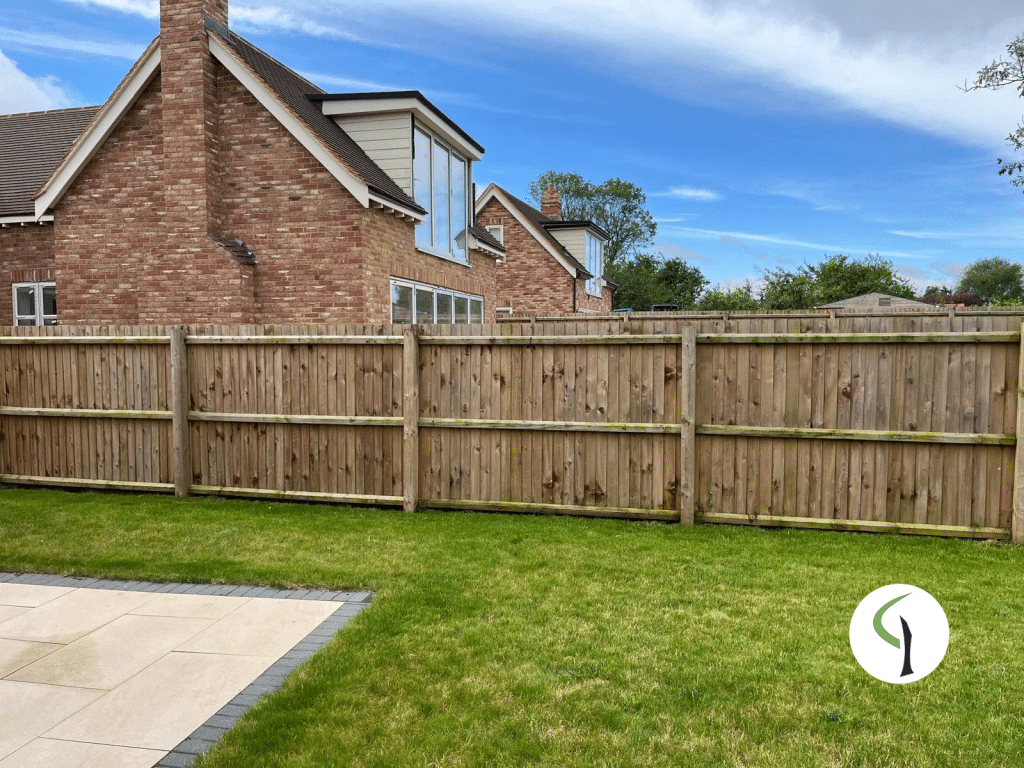
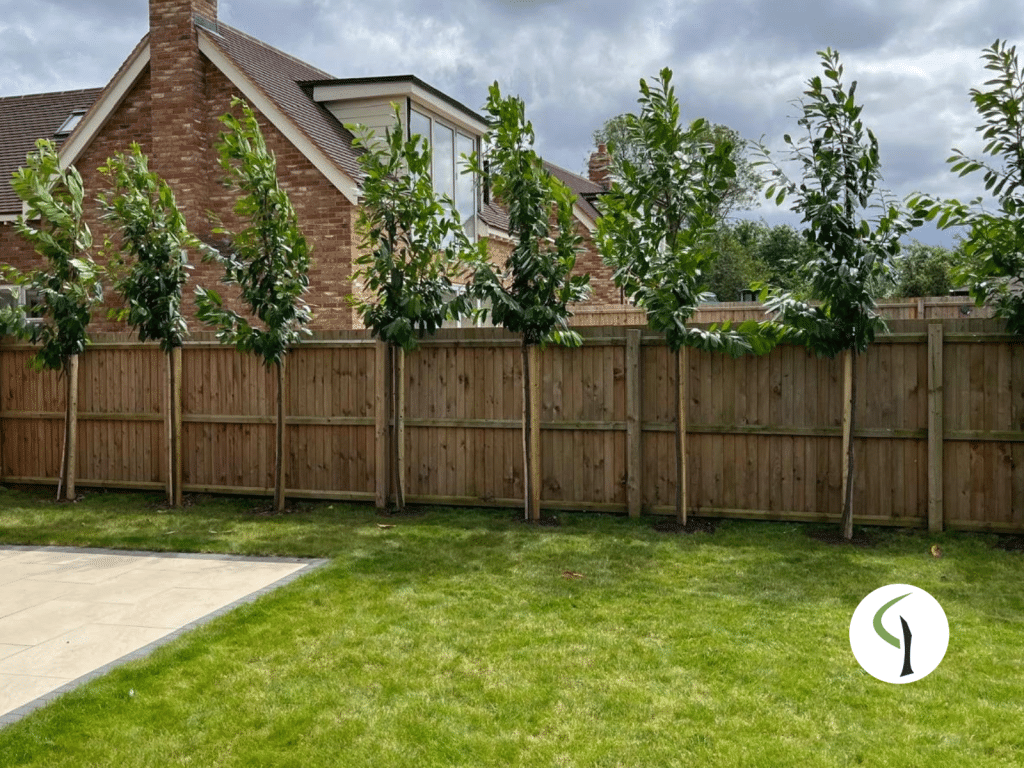
In recent years, we’ve noticed an increasing demand for trees that provide effective screening and enhance privacy, particularly for modern and new build homes. To help you choose the right trees for your needs, we’ve created this helpful guide. It showcases some of the best trees for screening, highlights important factors to consider during your selection process, and addresses some of the questions we are most often asked.
Let’s look at a few things you’ll need to consider.
When thinking about planting trees for screening, its a good idea to consider how quickly are you hoping for them to grow and provide privacy.
While some believe that creating effective screening with trees takes many years, immediate privacy can be achieved by planting mature or semi-mature trees, although the cost will depend on their size. Larger, more mature trees are typically more expensive as more time and resources has gone into their care. Whereas, smaller trees offer a more affordable option if you are willing to wait for them to grow.
We often find that planting screening trees that are about one to two growing seasons away from providing full coverage strikes a good balance. This approach offers privacy within a reasonable timeframe while remaining more affordable.
Considering the aspect of your planting site is crucial when choosing the right screening tree for your space. To help you select the most suitable tree, you should consider a few key factors about the location first.
1. How much sunlight does the area receive? Is it partly shaded, or does it primarily face North or South? Understanding the sun exposure will ensure the tree thrives.
2. What is the soil type in the planting location? Different trees have different soil preferences, and knowing this will aid in selecting a healthy and long-lasting screen.
3. What is the access like to the planting site? This is important for the delivery and planting process of your chosen tree.
The placement of a screening tree is usually determined by the need to obstruct the view from neighbouring windows and gardens. This means that you need to choose a tree that will not only provide effective screening but also flourish in the specific conditions of your location. If you have a particular tree species in mind, it’s worth considering whether the conditions of your site are suitable for it to grow well. If not, exploring alternative species that are better suited to the environment might be necessary.
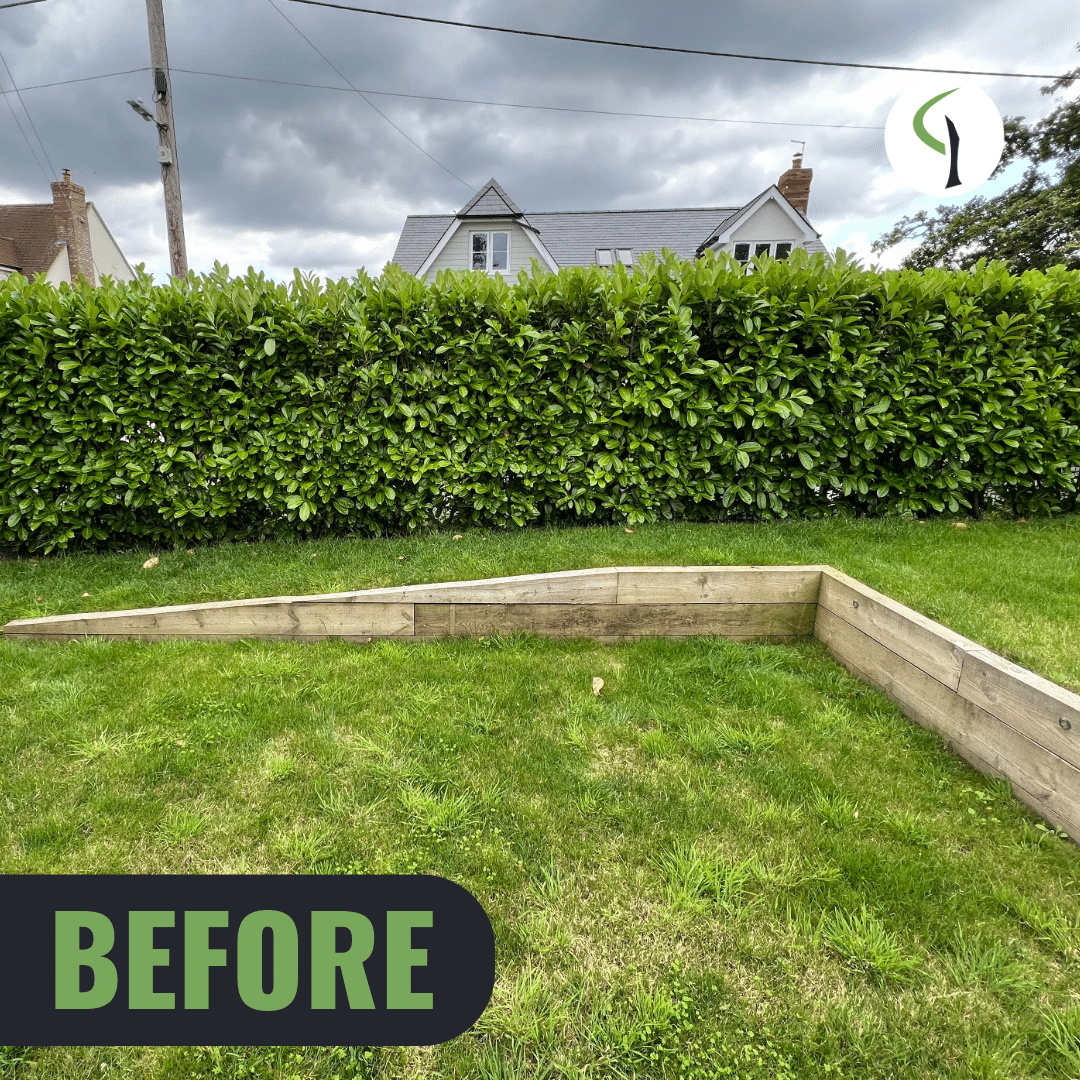
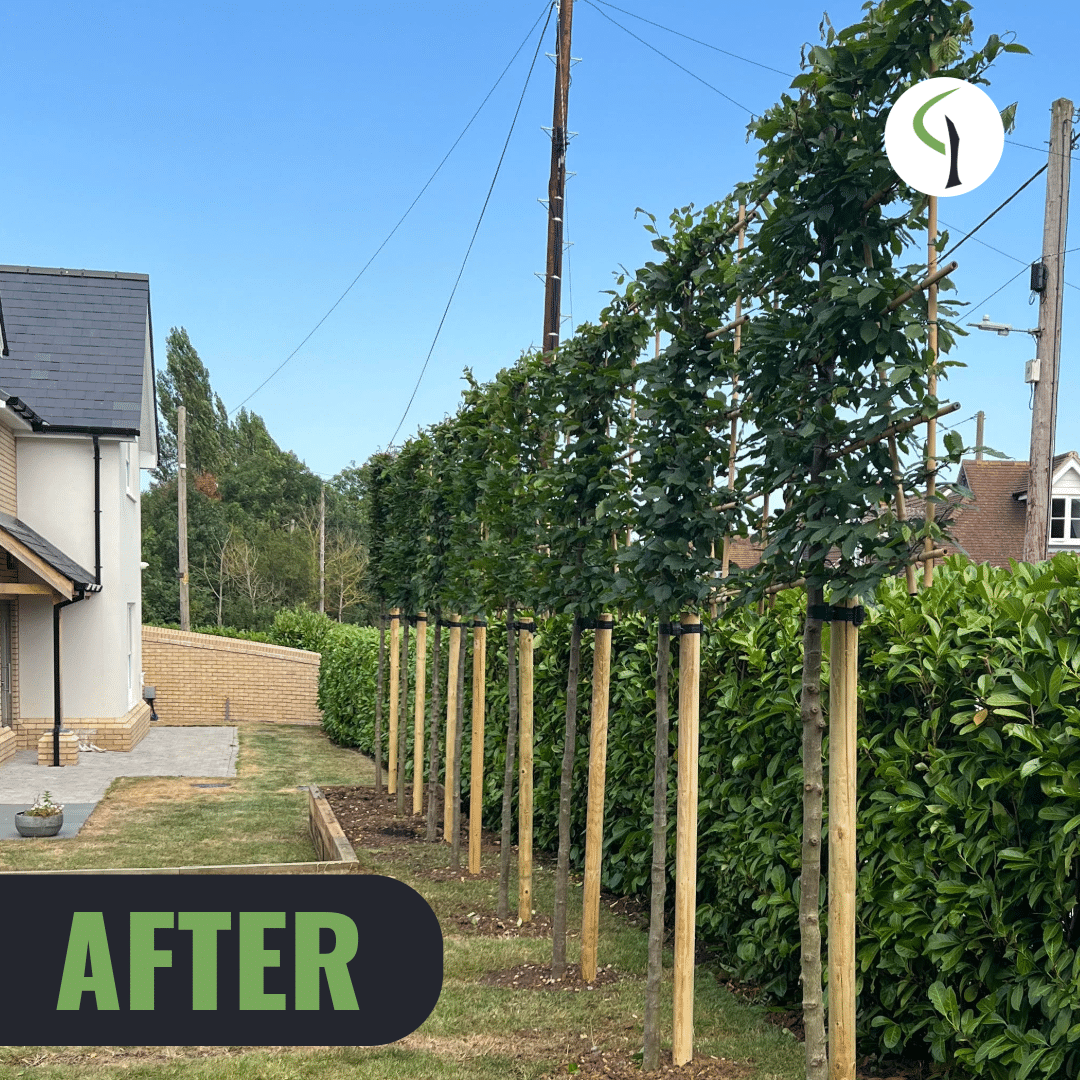
For smaller gardens where space is a premium, opting for trees with a clear stem of approximately 1.8m and a bushy head can be an excellent solution. These trees are also ideally suited for planting along fence lines or garden walls, creating an elevated screen that provides privacy above the existing boundary. Here are a few examples of trees well-suited for screening purposes:
Photinia ‘Red Robin’: This variety offers vibrant evergreen foliage that emerges as a striking red in the spring, providing beautiful winter interest.
Prunus laurocerasus (Cherry laurel): Featuring large, glossy green leaves that it keeps year-round, Cherry Laurel is another reliable option for a raised and bushy screen. It has established itself as one of the hardiest and most popular choices for planting in the UK.
Prunus lusitanica (Portuguese laurel): Narrower, slightly glossy, dark green leaves that emerge from purple tinted young stems. This variety has a slightly slower growth rates but holds onto its shape quite well with minimal trimming.
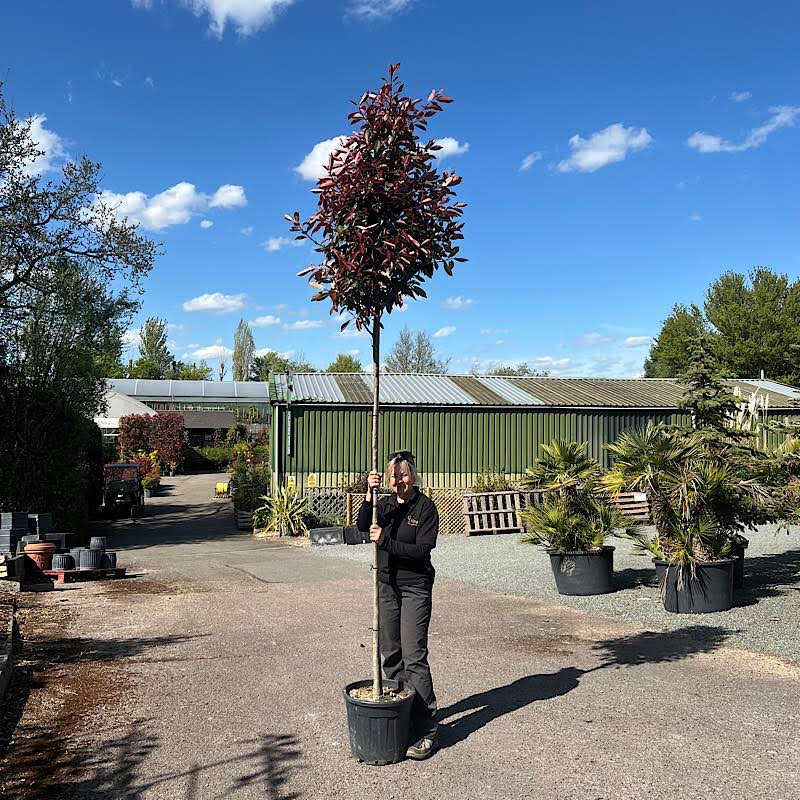

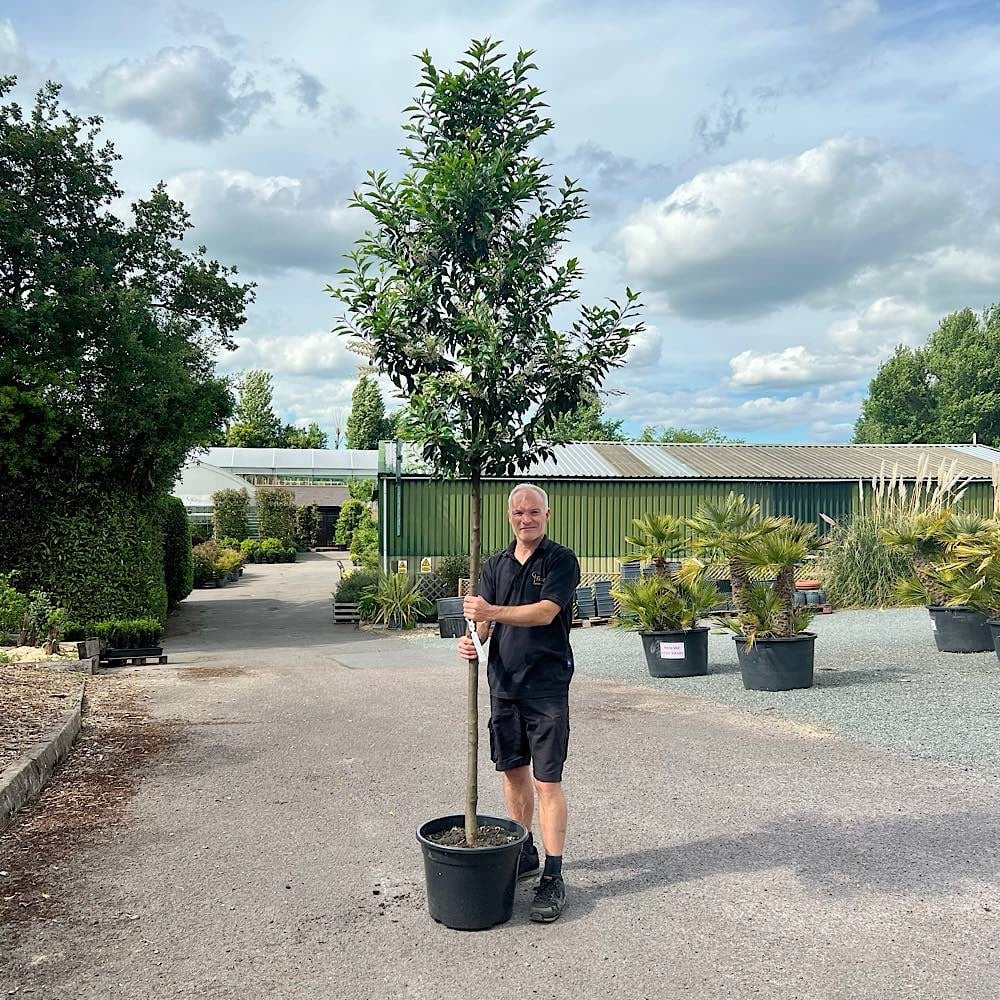
While the previously mentioned trees are suitable for large gardens, we have some additional suggestions if you have ample space. For expansive gardens, consider:
Carpinus betulus (Hornbeam). A semi-evergreen trees that holds onto its brown leaves in winter (unless it is overly cold or windy). Hornbeam makes an excellent screen, especially when grown as a pleached tree on a framework.
Tilia cordata (Lime). A deciduous tree that responds well to clipping and pollarding, this means that you can plant it in smaller spaces such as churchyards, streets, and avenues. Lime is also tolerant to a wide range of soils and very exposed positions!
To effectively screen taller and less desirable features, group plantings of Pinus sylvestris (Scots pine) and Pinus nigra (Austrian pine) works well. These pines mature at a height of 15 metres and are currently available at a manageable size of 1.75-2m. Austrian Pine is the faster growing of the two.
For planting locations in full or partial shade, consider a variety like Ilex ‘Nellie Stevens’. This holly boasts a naturally dense growth habit, making it an ideal selection for establishing an effective and attractive screen. ‘Nellie R. Stevens’ is also a self-pollinating hybrid derived from our native Holly, so it reliably produces an abundance of vibrant red berries each autumn. These berries not only provide a stunning visual display but also significantly enhance the plant’s seasonal interest.
We hope our guide has provided valuable insights into what we consider to be some of the best trees for screening purposes.
If you are still unsure or would like to save time on your research, please don’t hesitate to contact us by phone or email. Our knowledgeable team at the Tree Nursery is ready to assist you. Simply provide us with some details about your project and planting site, and we would be happy to offer tailored recommendations.
Further reading:
Screening trees create privacy for an overlooked garden on a new build estate
Photinia trees used as a cost effective natural screen to block view of unsightly factory
Three examples of beautiful Bamboo (Phyllostachys) for creating a natural screen
When you’re planning your planting scheme, it can be really helpful to seek professional guidance. This is because experts can offer advice on the species that will thrive best in your garden’s specific conditions. A crucial factor in selecting the right plants and trees is your soil type. To understand your situation better, a professional might ask whether your property has clay, sandy, light, chalky, or wettish soil, and if you experience standing water at any point during the year. These factors are key to determining the plants that will thrive in your landscape! Professionals can also provide expert advice on installation, ensuring your new plants get off to the best possible start.

We understand that choosing the right trees involves many considerations. That’s why we don’t offer general recommendations on our website. Instead, we believe in providing personalised guidance to help you accurately assess your specific location. This one-on-one support is a significant advantage of purchasing trees from an experienced and independent nursery like ours.
Even the healthiest trees can face challenges if planted in an unsuitable environment. To help you avoid the potentially costly error of placing a tree in a less-than-ideal spot, we highly recommend discussing your plans with one of our experts.
To help ensure your new tree gets the best start, it’s important that it is correctly staked and tied for support during establishment. While a landscaper can certainly handle this for you, we’ve also created a helpful video guide that demonstrates the best professional techniques for planting and staking your tree yourself!
This instructional video covers everything you need to know, from digging the right size hole and improving the soil quality to properly staking and tying your tree, and understanding the correct amount of watering after planting.
We hope this helped to clarify why understanding your soil type is crucial before planting, as well as highlighting the importance of proper installation techniques. To ensure your trees thrive from the start, we always recommend seeking professional advice prior to planting. Please do not hesitate to contact us via email or phone. We are always happy to offer friendly, no-pressure advice on selecting the ideal tree species for your specific requirements!
Instant hedging presents a fantastic option for projects where immediate impact is desired. By selecting established plants, you can effortlessly create an instant hedge. This allows you to enjoy the look and benefits of a mature or semi-mature hedge without waiting for smaller plants to grow.
In this article, we’ve outlined the key advantages of choosing instant hedging. We’ve also provided a selection of suitable plants for this purpose!
The plants we use for instant hedging are taller and pre-grown. This means that they have been grown on in a container to strengthen their root systems and thicken their foliage. Choosing these plants provides several key benefits:
Many of our customers choose to install instant hedges for privacy reasons. While evergreen varieties offer year-round screening, our deciduous options like hornbeam and beech also provide excellent coverage. It’s worth noting that these deciduous hedges often retain their dry, brown leaves during the winter, except in very windy or cold conditions. This characteristic allows them to maintain a degree of screening while still permitting more light and air into the garden during the winter months!
Cherry laurel is an excellent choice for establishing privacy. This robust plant boasts a fast growth rate of 30-60cm per year once it’s established and can eventually reach an impressive height of 8 metres. Its tolerance for hard pruning means you can easily maintain your preferred size and shape, whether you desire a formal, neatly clipped hedge or a more natural aesthetic. Versatile enough for gardens and spaces of all sizes, Cherry Laurel can be maintained at a height of 1m+ or more to suit your specific needs.
Leylandii is another evergreen option that’s perfect if you’re looking to establish hedging quickly. Known for being one of the fastest-growing trees, its rapid growth and dense foliage make it an excellent choice for creating instant privacy. If the vigorous growth rate of a Leylandii is not desirable, Western Red Cedar (Thuja plicata) could be a more suitable alternative.
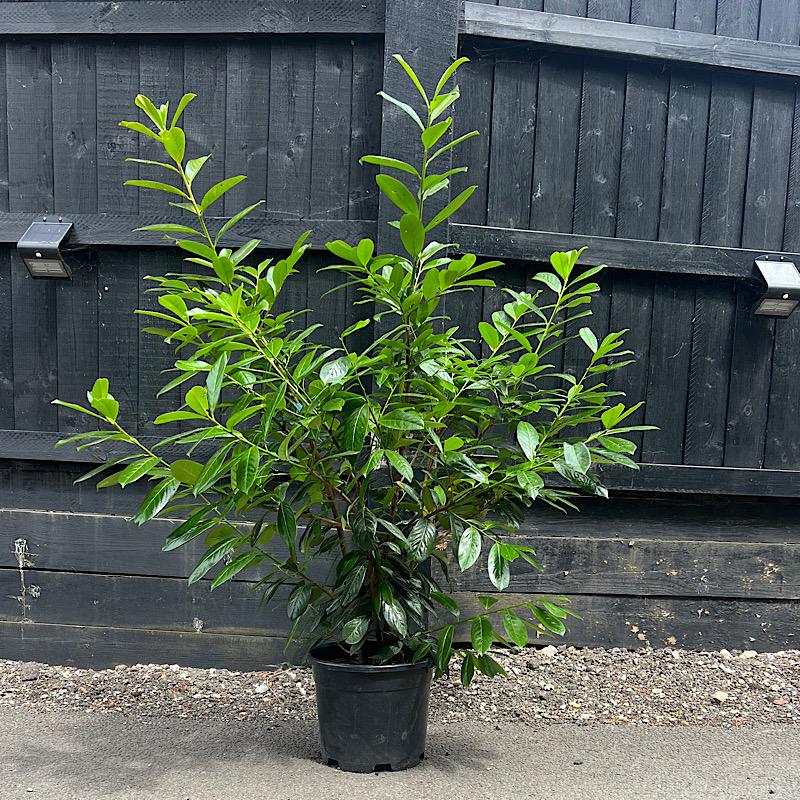
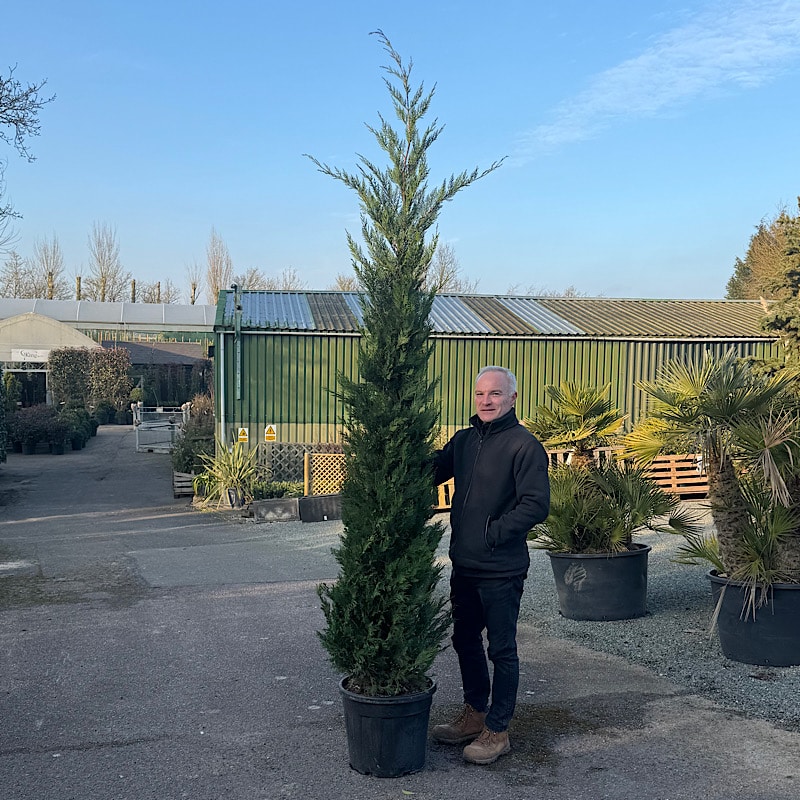
Our top selling deciduous, instant hedging plants are Purple beech, Green beech and Hornbeam. These varieties are often referred to as ‘semi-evergreen’ because they can retain their dry brown leaves throughout the winter months, offering year-round screening (unless the conditions are particularly windy or cold). For those with sandy or lighter soils, Beech is an excellent choice. Hornbeam, on the other hand, thrives in heavier clay soils, which are commonly found in the south east of England, including Essex, Suffolk, Cambridgeshire, and the London area.
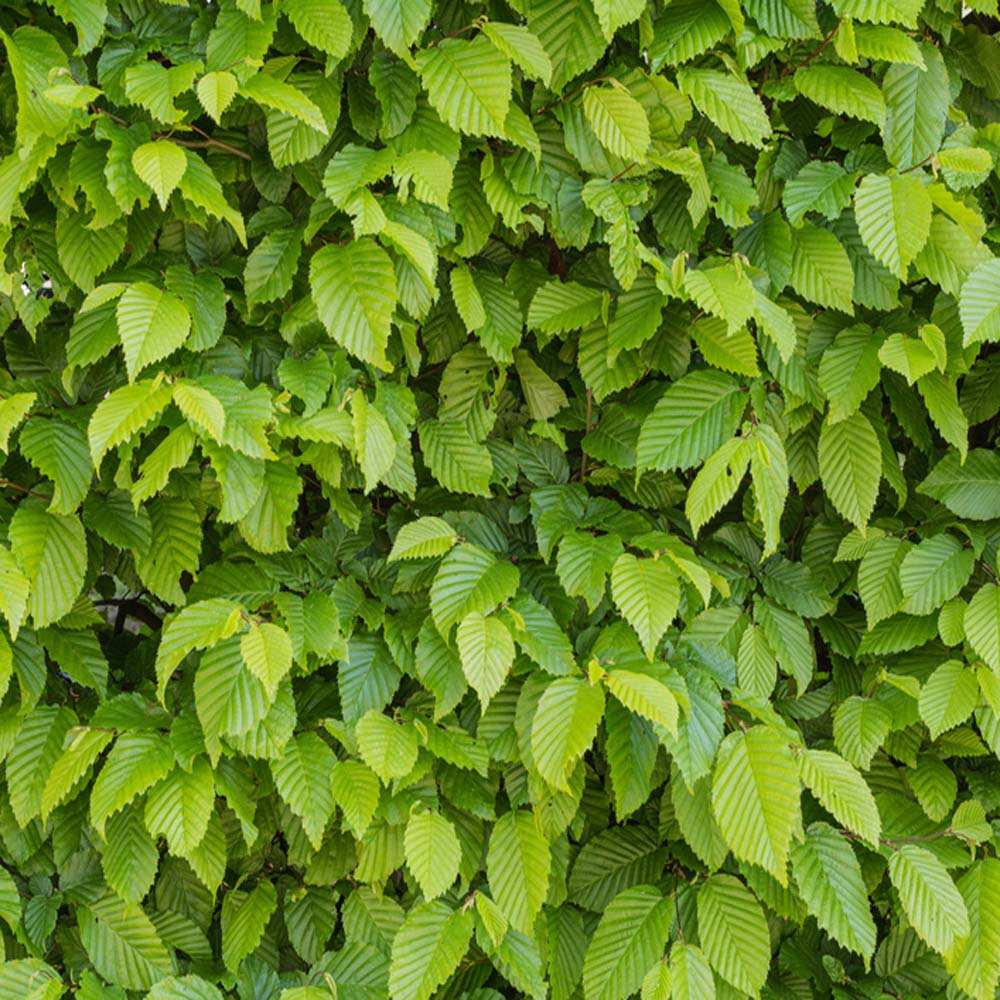
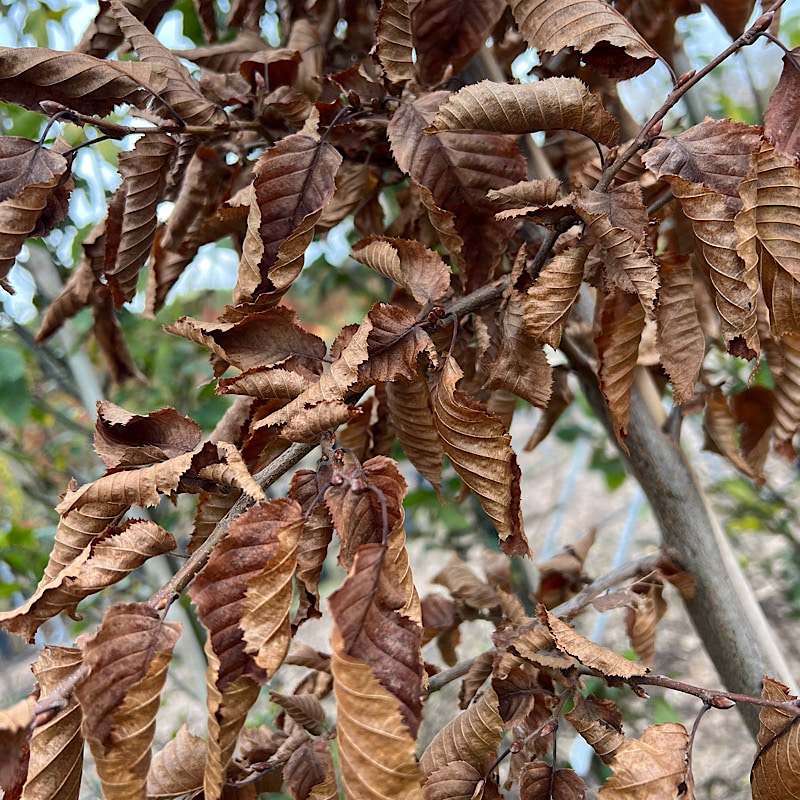
Choosing the right species involves considering various factors, such as aspect and soil type. For instance, certain plants need shelter from harsh winds and may only flourish in urban environments. This highlights the value of a knowledgeable supplier who can offer expert guidance tailored to your specific needs.
While we hope this article has clarified the process of creating an instant hedge, we encourage you to contact our experienced team if you have any further questions. Given that an instant hedge can be a considerable investment, it’s essential to seek professional advice to discuss the most suitable options and ensure you make the best choice!
Further reading:
Japanese maple trees are good for adding stunning colour to any garden, as they frequently display vibrant hues of green, red, orange, and gold throughout the seasons. These trees also tend to be smaller than other varieties within the Acer genus, making them incredibly versatile. This means that they can thrive in gardens of all sizes, from the most compact spaces to larger landscapes. They also do wonderfully when planted in containers!
When planting ornamental acers, we recommend that they are planted in a location that offers morning shade and afternoon full sun. This helps to prevent leaf scorch that can occur from too much direct sun or the evaporation of morning dew on the leaves!
Acer palmatum ‘Jerre Schwartz’ is a truly captivating addition to any landscape. It has feathery, lobed leaves that unfurl in spring with a rich dark green colour, beautifully enhanced by bronze or pink undertones. This creates a visually striking display right from the start of the season.
As autumn approaches, ‘Jerre Schwartz’ truly shines with its foliage transforming into a stunning, vibrant red. This provides a spectacular show of autumn colour. Beyond its foliage, this Acer also has delicate, small flowers in the spring. These flowers develop into attractive red winged fruits, adding another layer of visual interest throughout the year.
With a compact and upright growth habit, ‘Jerre Schwartz’ typically reaches a mature height of 1.5 to 2.5 meters. This manageable size, combined with its exceptionally attractive foliage, makes it a highly sought-after choice for architectural planting and a perfect fit for various landscape designs, from containers and city gardens to rock gardens.
‘Sango-kaku’ has striking coral-red young branches that deepen in colour throughout the winter months. In spring, delicate 5-lobed leaves emerge with pinkish-yellow hues. These leaves transform to a lush green in summer before turning a lovely yellow in the autumn. It also produces very small reddish flowers in the springtime.
The Coral-bark maple is a versatile plant that can grow into a substantial shrub or a small tree. Its striking appearance makes it an excellent choice as a feature plant, whether showcased as a captivating focal point in a container or as an attractive addition to a mixed border. Especially as its abundance of colourful stems offers wonderful interest throughout the winter months!
‘Bloodgood’ is a striking, large, bushy deciduous shrub known for its rounded shape and attractive, deeply lobed foliage. The leaves emerge in a rich red-purple in spring, transforming to a vibrant red before falling in the autumn. In addition to its foliage, this shrub produces small purple flowers in the spring, followed by distinctive red winged fruits, providing recurring splashes of eye-catching colour and interest throughout the seasons.
Reaching a mature height of 4 meters, the Japanese maple thrives in full sun to partial shade and prefers moist, well-draining soil. Highly valued for its beautiful foliage, it is a popular architectural plant, perfectly suited for planters, city gardens, and rock gardens.
When planting ornamental acers, we advise choosing a location that offers morning shade and full afternoon sun. This planting strategy helps prevent leaf scorch, which can occur from excessive sun exposure or the rapid evaporation of morning dew on the leaves.
We hope the information provided has been helpful in explaining what Japanese maple trees are good for while showcasing their beauty and versatility!. They truly are wonderful for enhancing any landscape. Please do not hesitate to reach out if you have any questions. We would also like to remind you that you are welcome to visit our nursery to personally select your plants!
A frequent concern for homeowners in new build estates is the lack of privacy in their rear gardens due to overlooking windows. Here we have recounted a recent planting job and explained how we helped a customer to create privacy in their overlooked garden. we have also shared the best practices for ensuring that any new or replacement trees stay healthy and thrive. We have also shared the best practices for ensuring that any new or replacement trees stay healthy and thrive!
We were recently approached to suggest a suitable screening tree solution for a new build estate in Braintree, Essex.
For this particular customer, we needed to find a year-round screening solution that would reach a mature height of approximately 5 metres. It was also important that the screen be evergreen, reliable, and straight forward in terms of maintenance. The customer also specified that the planting location would be about ten metres away from buildings. This constraint meant we had to avoid large, high-moisture demanding trees due to the potential problems they can create.
Cherry Laurel (Prunus laurocerasus) met this requirement perfectly as it is disease-resistant, particularly tolerant of cold winds, and requires minimal maintenance. Seen here in standard form, with a clear stem and a full, dense head of foliage, these trees were effectively planted against a fence to block the view of the house behind the garden!
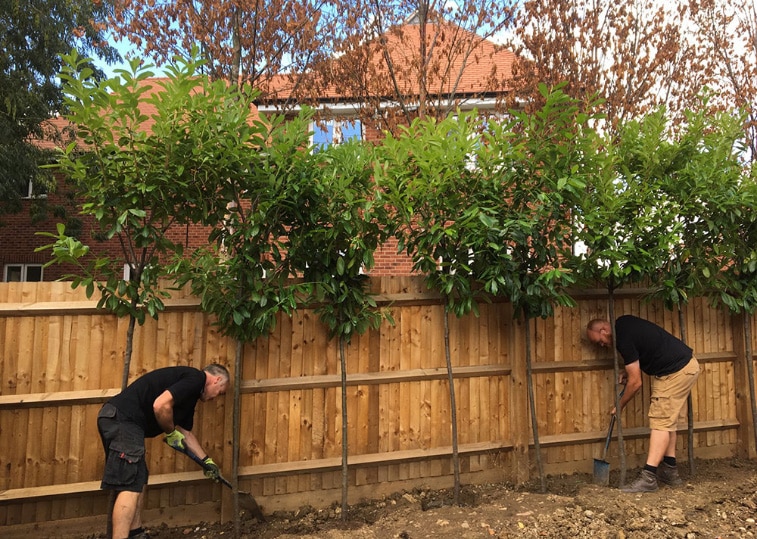
This installation achieved 80% coverage immediately, with fuller coverage expected to take a maximum of two growing seasons. Our customer now has an instant screen so they can start to immediately enjoy privacy in their garden.
We also made sure to provide guidance on the best methods for maintaining healthy trees. The most important thing for this customer to do is maintain a regular watering schedule. Following this schedule over the first few growing seasons will ensure that the soil stays moist. For more detailed information, please take a look at our article on watering newly planted trees!
Hopefully this demonstrated how to create privacy in an overlooked garden, but we’re always available to answer questions or offer advice on choosing suitable screening trees. We also deliver throughout mainland UK so don’t worry if you’re not local to the tree nursery. Even some of our larger mature trees can be sent to you within 24 hours with specialist delivery experts!
Read More
Caring for trees in summer is more important than ever, as rising temperatures and dry spells become increasingly common. With proper care, your trees can withstand the challenges of the season and continue to grow strong and healthy!
In recent years, the UK has experienced some of its hottest summers on record. The summer of 2018 brought an extended heatwave with weeks of high temperatures and dry conditions. Then in 2022, we experienced notably hot conditions, with record-breaking temperatures of over 40°C! Anyone travelling through southern England at this time could see the visible impact of these extremes, as many trees struggled or failed to survive the drought.
During the summer of 2018, newly planted trees, particularly those set in the autumn of 2017 and spring of 2018, were hit the hardest. Species like Silver birch (Betula pendula) and Hornbeam (Carpinus betulus) suffered substantial losses. In fact, some reports estimate that up to 60% of trees perished due to desiccation. This had a significant impact on the following planting season, with increased demand placing pressure on nurseries and leading to shortages.
During summer, the most important thing you can do is establish a regular watering routine. Keeping the soil consistently moist helps reduce stress and supports healthy root development. However, it’s essential to avoid both overwatering and underwatering. Dry soil can damage roots and inhibit growth, while overly saturated soil can prevent roots from accessing necessary oxygen.
1. Don’t rely on rainfall: Summer showers often don’t provide enough moisture for the root system. Stick to your watering schedule regardless of recent rain.
2. Water at the base: Focus your watering around the trunk to target the roots.
3. Don’t water the leaves: Wet leaves can encourage fungal issues or lead to leaf scorch.
4. Use a rose attachment: A rose head on your watering can reduce runoff and help water penetrate the soil more effectively.
Hopefully, this article helped to show how correctly caring for trees in summer can reduce stress and help prevent loss. For more information, check out this article and remember, with consistent care and attention your trees will continue to thrive, even during the hottest months.
Yes, trees and plants make fantastic gifts as they are long-lasting and sustainable. Avoid buying your loved one something they won’t use, and surprise them with a gift that keeps on blooming year after year!🌷
Betula utilis Jacquemontii, also known as the Himalayan birch, is a truly remarkable tree celebrated for its beauty throughout the year. This distinctive tree boasts a stunning, bright white bark that provides a striking contrast to its green, ovate leaves. As the seasons change this tree brings wonderful visual interest to any garden. The Himalayan birch is also wonderfully versatile and thrives in gardens of all sizes, including smaller spaces.
With striking red-purple leaves and lovely autumn tones, Acer platanoides ‘Royal Red‘ is a visually appealing choice that can make a good gift! This Norway Maple is quite adaptable and can thrive in various conditions, making it particularly suitable for planting in urban environments where it can introduce a rich splash of colour. This Acer variety also requires minimal upkeep and is resilient even in harsh winter weather.
If you’re looking for a gift that offers lasting beauty and requires little care, the Acer platanoides ‘Royal Red’ is an excellent selection!
Topiary plants, such as half standard, spiral, or pom-pom trees, are excellent gift options. Frequently used as attractive ornamental features, their appeal lies in their ease of maintenance and the ability to trim them to a specific size or shape. They are often seen displayed in pairs, adding a symmetrical touch when placed on either side of a door or pathway.
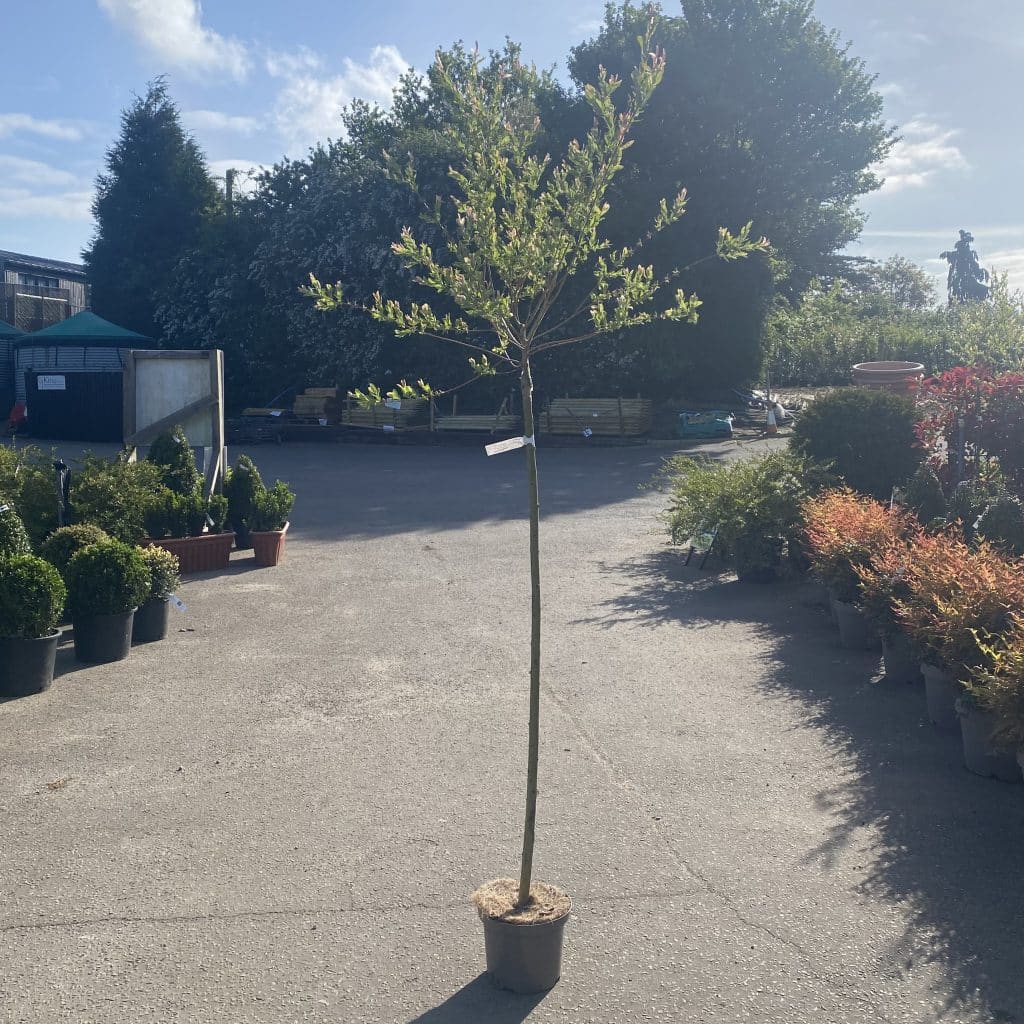
It is possible to purchase a gift voucher for use at the Tree Nursery in Essex ranging from values of £25 to £250, which is perfect for a birthday, wedding or housewarming present. Please email sales@kingco.co.uk if interested.
Hopefully this highlighted how good trees are as gifts. Check out our full catalogue on our website, you can also visit the nursery to see our stock in person and pick your own trees!
For newly planted trees, consistent watering is crucial, especially during the initial few growing seasons. This helps the trees develop strong root systems and ensures the soil remains adequately moist.
Certain tree varieties are more tolerant of drier conditions and may require less frequent watering over time. This could be a beneficial consideration, as maintaining long-term irrigation can sometimes be challenging without a sophisticated system of timers and pipes!
Although these plants tolerate drier conditions once established, it is important to remember that they need a regular watering schedule during the first growing seasons.
Abelia x grandiflora Compacta is considered well-suited for dry conditions. Although it thrives in moist, well-drained soil, it demonstrates good tolerance to dry soil once it has become established. After establishment, these plants can withstand dry periods with little need for additional care.
This Abelia is a lovely addition to any garden. It features gracefully arching stems covered in glossy green leaves that emerge with a beautiful bronze tint when they’re young. From summer onwards, it’s adorned with numerous fragrant, funnel-shaped flowers in shades of white to pale pink. Though usually evergreen, it might become semi-evergreen in very cold winters.
Reaching a mature height and spread of approximately 1m, this resilient plant is a popular choice for its beautiful summer blooms. Ideally suited for growing in full sun, it works wonderfully as a low-lying foreground shrub and provides effective ground cover!
Lavender angustifolia, also known as English Lavender, is quite drought-tolerant and can handle dry periods once established. It’s an excellent choice if you have drier conditions and well-drained soil in your garden!
English lavender is a beautiful, small evergreen shrub characterized by its narrow, grey-green leaves and an abundance of small, violet or purple flower heads that appear in summer on short spikes. These flowers create a lovely, dense covering over the plant. Growing into a mound shape, Lavender angustifolia typically reaches a mature height of around 50cm, making it a popular option for ground cover or for defining pathways. Beyond its visual appeal, this Lavender offers a wonderful fragrance and is also great for attracting beneficial insects like bees and butterflies to your garden.
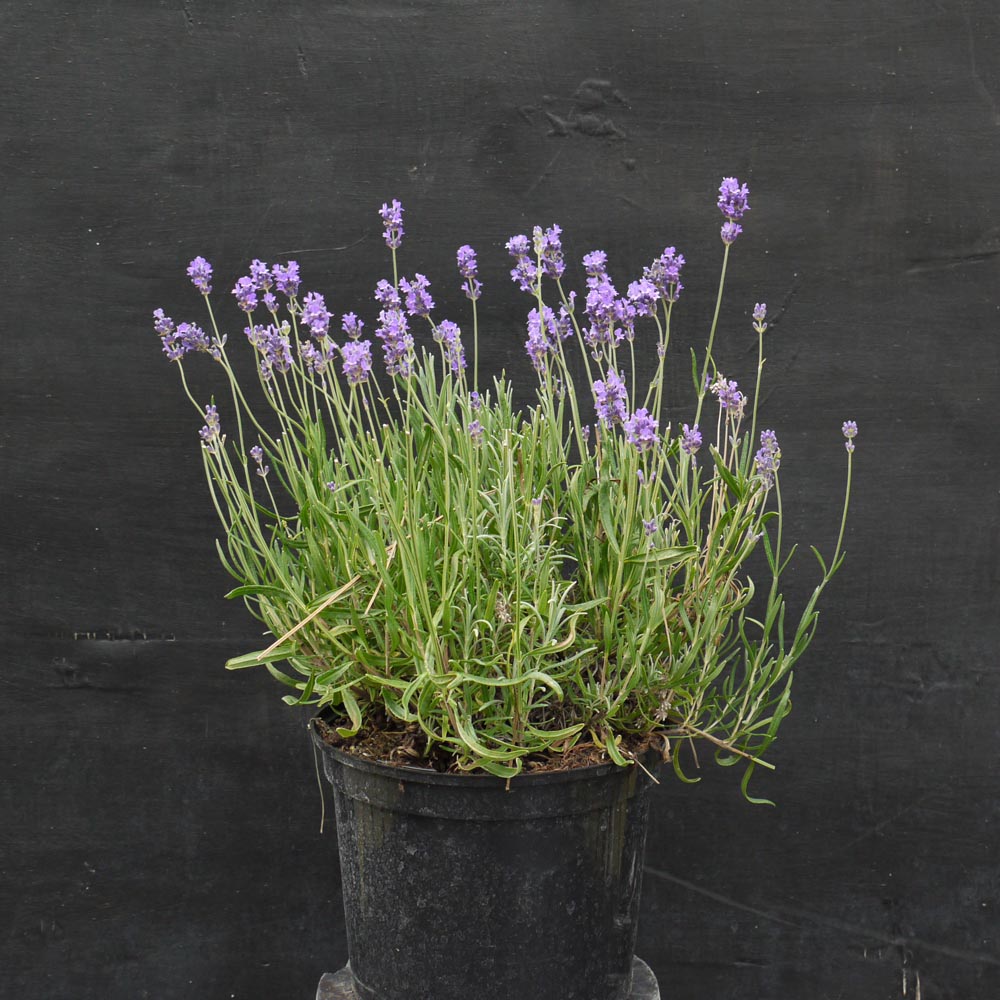
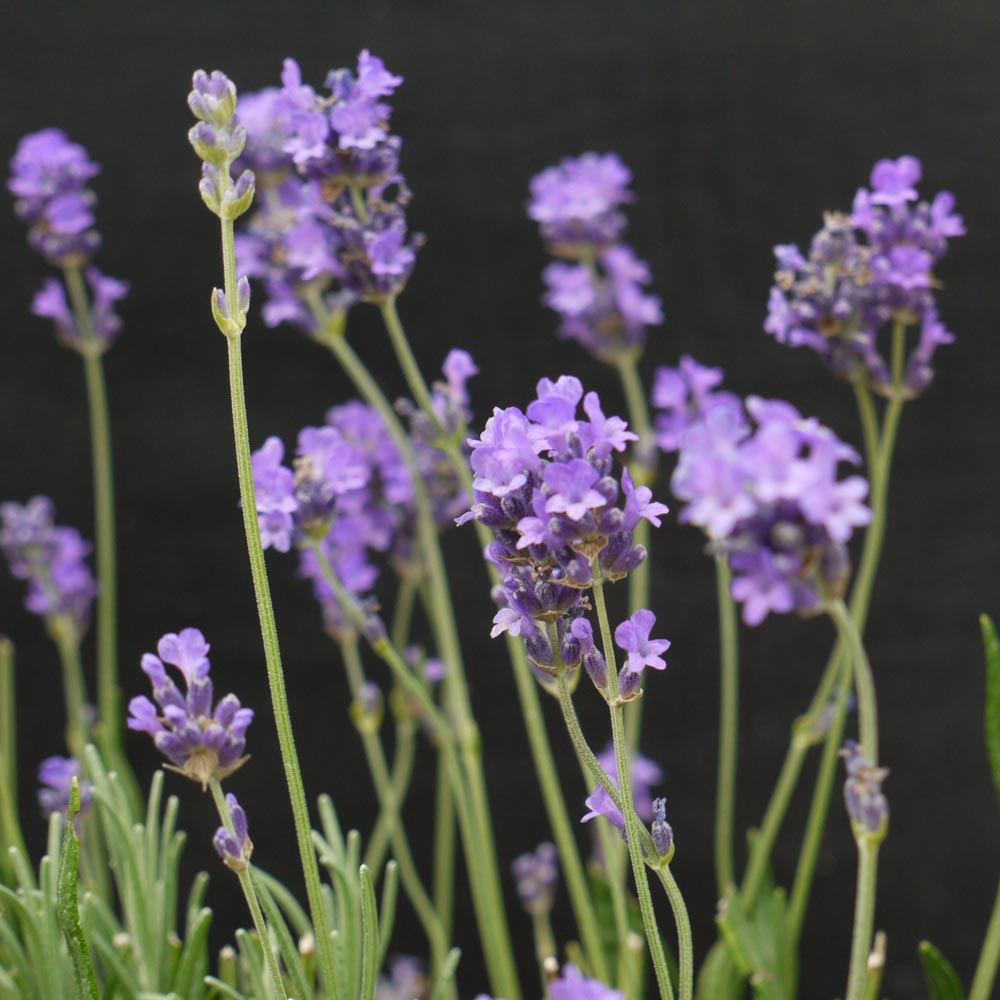
Like the Abelia, Hebe pinguifolia ‘Sutherlandii’ thrives in moist, well-drained soil. However, it’s quite resilient and can handle drier conditions once it’s established.
‘Sutherlandii’ is a lovely evergreen shrub with a neat, rounded shape. It features small, grey-green, oval leaves and produces an abundance of tiny white flowers on spikes, typically appearing from late spring to early summer. This plant is very easy to care for and grows to a mature height of about 40-50cm with a spread of 90-100cm. This forms a low mound that is ideal for providing structure and ground cover.
Hopefully this helped to highlight some of our favourite suggestions for drier conditions. Just remember that they need a regular watering schedule over the first growing seasons!
Yes, Bamboo is an excellent choice for screening! While some may be concerned about its rapid growth, bamboo offers fantastic coverage with its vibrant green leaves without creating complete shade. Its growth pattern naturally becomes more open at the top, allowing light to filter through. Additionally, bamboo can be a wonderful addition to a sensory garden due to its gentle, rustling sound in the breeze.
At King & Co, we offer three beautiful varieties of clump-forming bamboo that are well-suited to our climate, meaning they grow in manageable clumps rather than spreading invasively. These include Golden Bamboo, Black Bamboo, and Spectabilis Bamboo.
Phyllostachys ‘Aurea’ commonly known as Golden Bamboo has beautiful stems and leaves that initially appear in lovely shades of mid to light green. With plenty of sunshine, the stems can mature into a beautiful golden yellow, which is how this bamboo gets its common name! As the plant establishes, trimming the lower growth can further accentuate the vibrant golden colour of these stems.
Golden bamboo is known for being both resilient and easy to cultivate, establishing itself quickly into a sizable, bushy plant. Typically reaching a mature height of up to 4m, it can grow even taller in particularly favourable conditions. New shoots emerge in late spring to early summer, once the soil warms up and the nights become milder. This new growth is remarkably rapid, with noticeable development occurring each day.
Golden Bamboo is an excellent choice for creating hedges and natural screens. It also stands out beautifully as a solitary specimen plant. At King and Co, we currently have Phyllostachys ‘Aurea’ available at heights of approximately 2-2.5m.
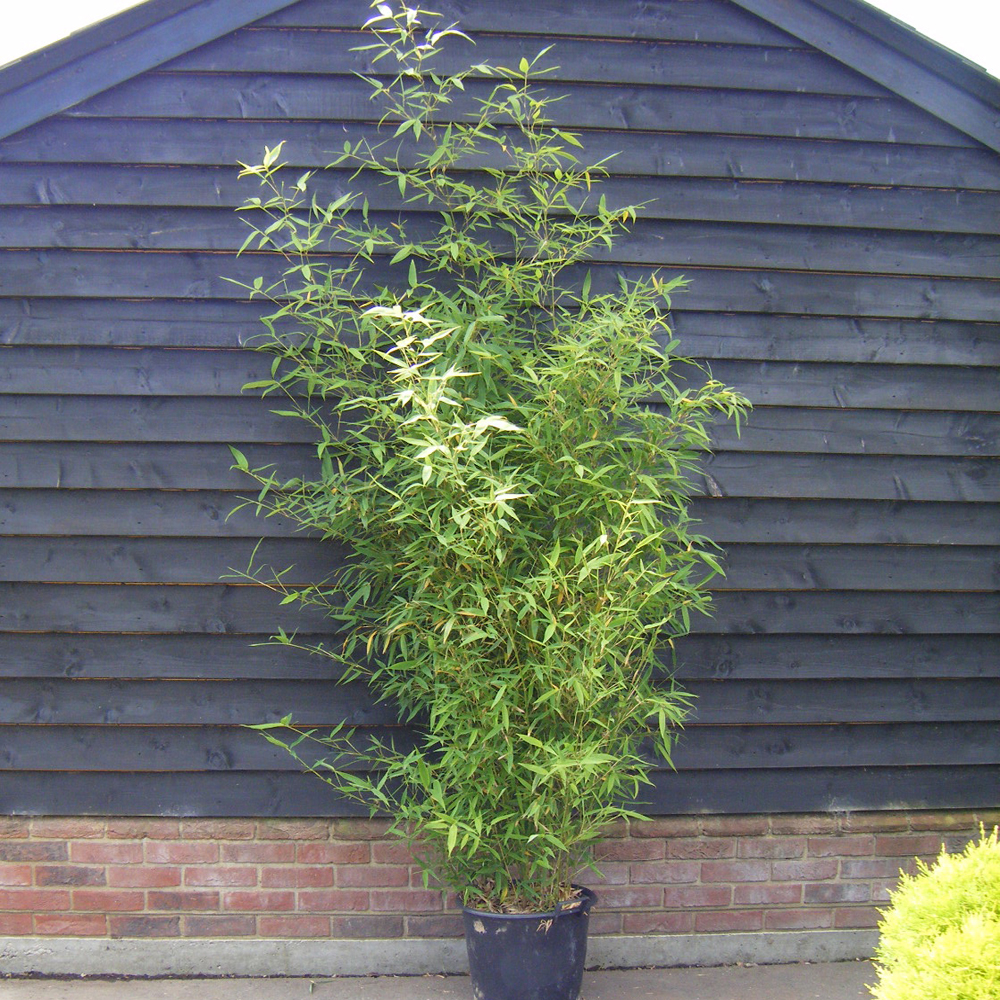
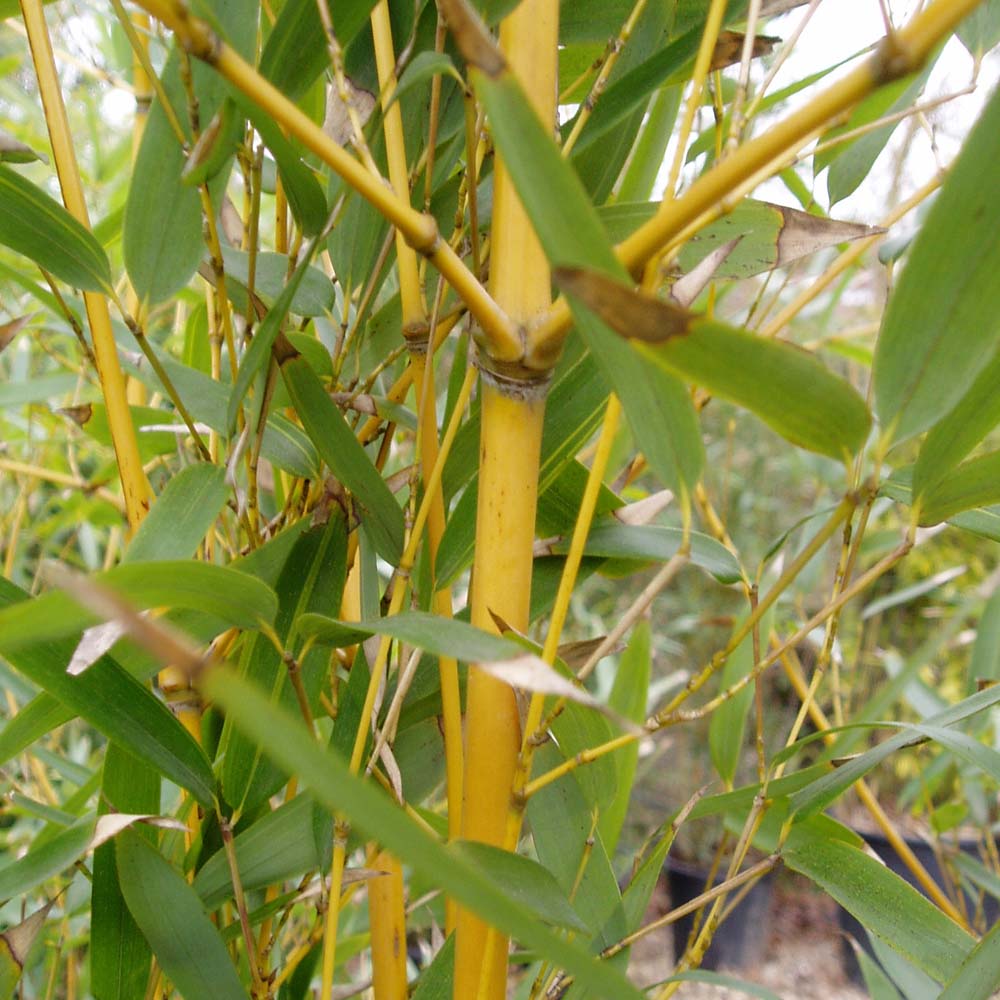
Phyllostachys ‘Nigra’ is also known as Black bamboo. It is a highly decorative variety with new shoots that emerge as dark green, gradually transforming to a rich dark brown, and eventually developing a glossy black finish when exposed to ample sunlight! Particularly admired for its striking dark stems, its visual appeal can be further enhanced by removing the lower leaves to showcase the canes.
While Black Bamboo grows more slowly and is less hardy compared to other bamboo types, it will flourish in moist soil and a sunny, sheltered location. Reaching a height of around 3-3.5m in most environments, this plant will form a dense, attractive clump. Please note that some leaf scorch or browning might occur during periods of very cold and icy winds, but he plant will typically recover and regrow in the spring. This bamboo is also available at King and Co at a size of 2-2.5m tall.
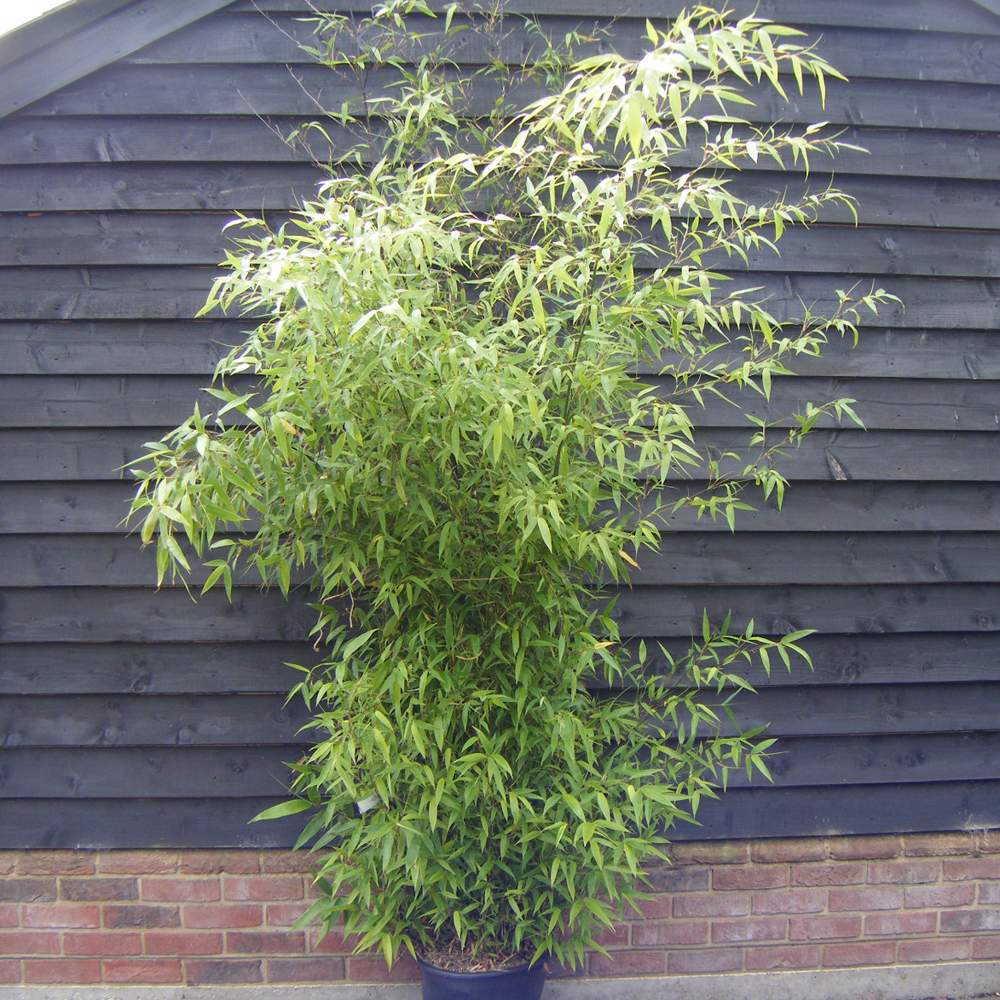
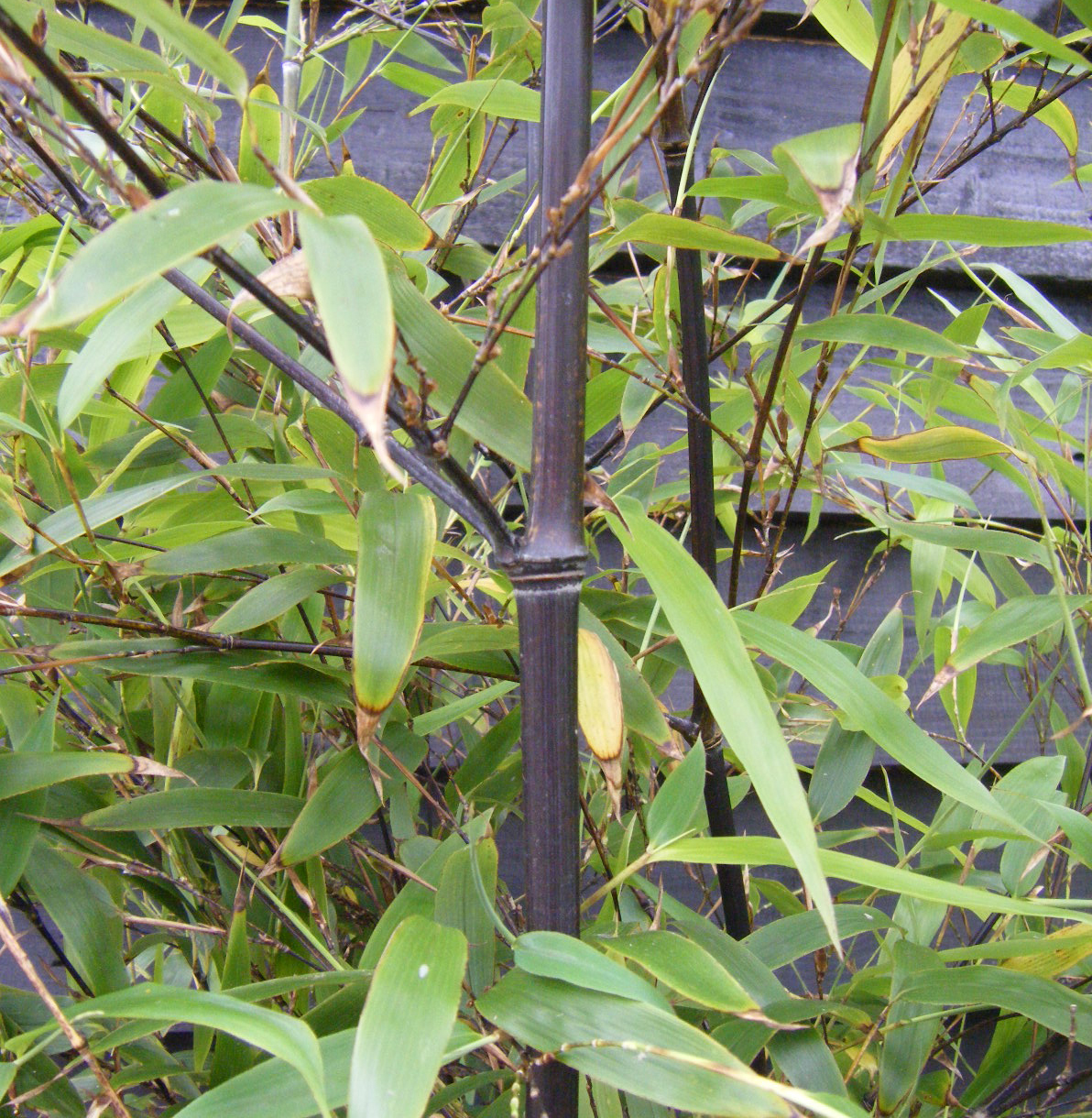
Phyllostachys ‘Spectabilis’ is another excellent bamboo variety we stock. Unlike Phyllostachys ‘Nigra’ with its distinctive black stems and Phyllostachys ‘Aurea’ with its green to golden canes, ‘Spectabilis’ features striking stout yellow canes with unique green grooves, creating a visually appealing stripy effect.
Similar to our other bamboo varieties, this species retains its green, lance-shaped leaves throughout the year and grows in clumps, making it well-suited to the UK climate. Phyllostachys ‘Spectabilis’ is currently in stock at a height of 2-2.5m.
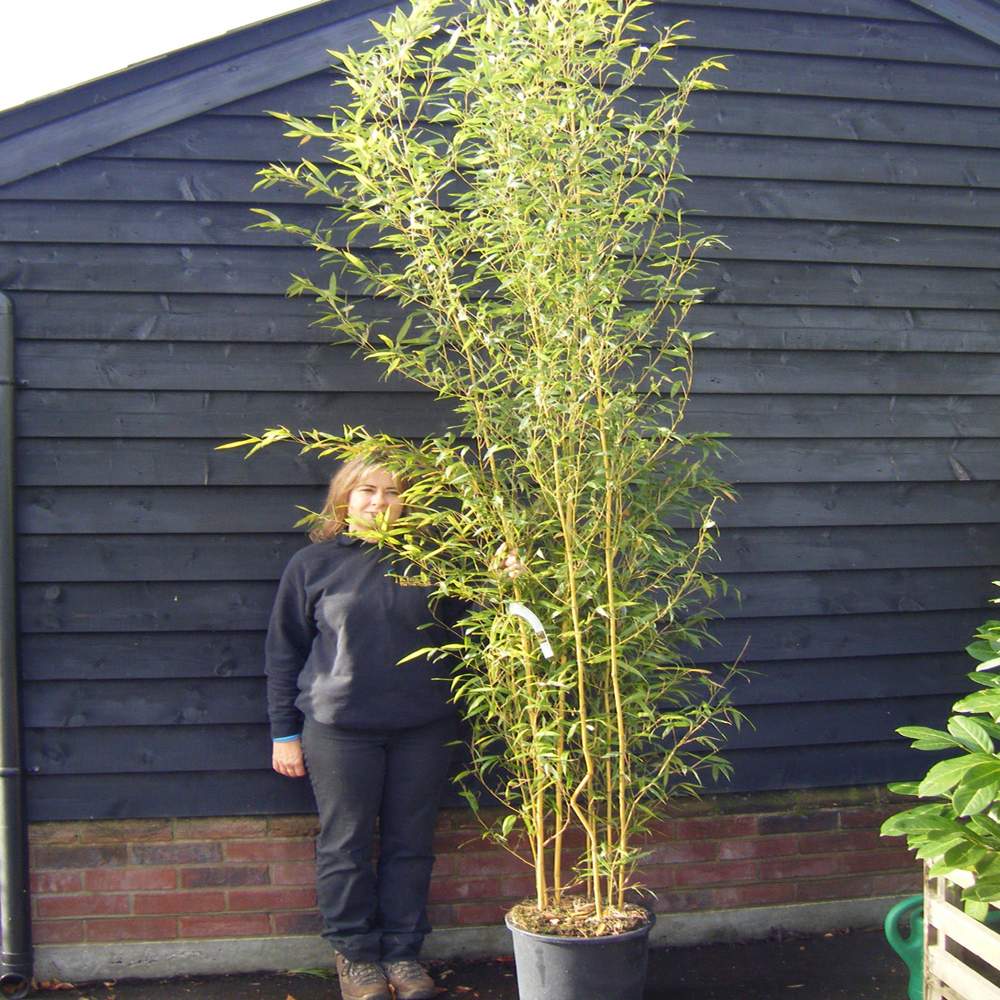
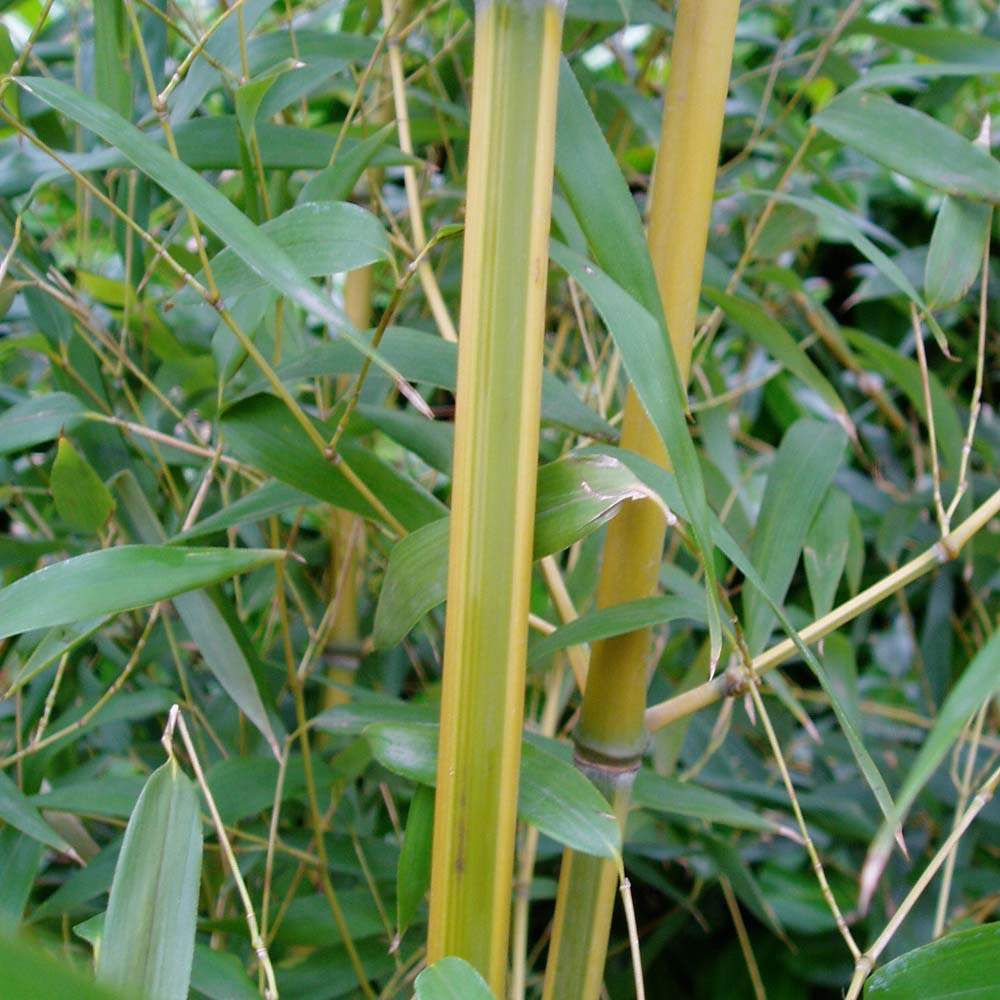
While the three varieties we discussed are clump-forming, it’s worth noting that they can occasionally spread in very favourable conditions. If you need to manage their growth, installing a root barrier is a straightforward solution to direct the roots as desired. In summary, bamboo is an excellent choice for screening. Just take steps to control its growth to prevent it from becoming invasive.
Oak Processionary Moth (OPM) is a species of moth whose caterpillars are known to inhabit oak trees. These caterpillars have tiny hairs that can potentially cause skin irritation and, in some cases, respiratory issues in people. In addition to this, they can also affect the health of oak trees by feeding on their leaves.
Originally detected in London, OPM has gradually spread to nearby regions, including parts of Essex. As a result, certain regulations are now in place regarding the movement and planting of oak trees. To comply with these measures and help prevent the spread of OPM, we have made the responsible decision not to stock oak trees with a girth size over 8–10cm.
We are still able to supply younger, smaller oak trees that fall within the permitted guidelines. The varieties of Oak that we are usually able to source are the English oak, Red oak and sometimes the Evergreen oak.
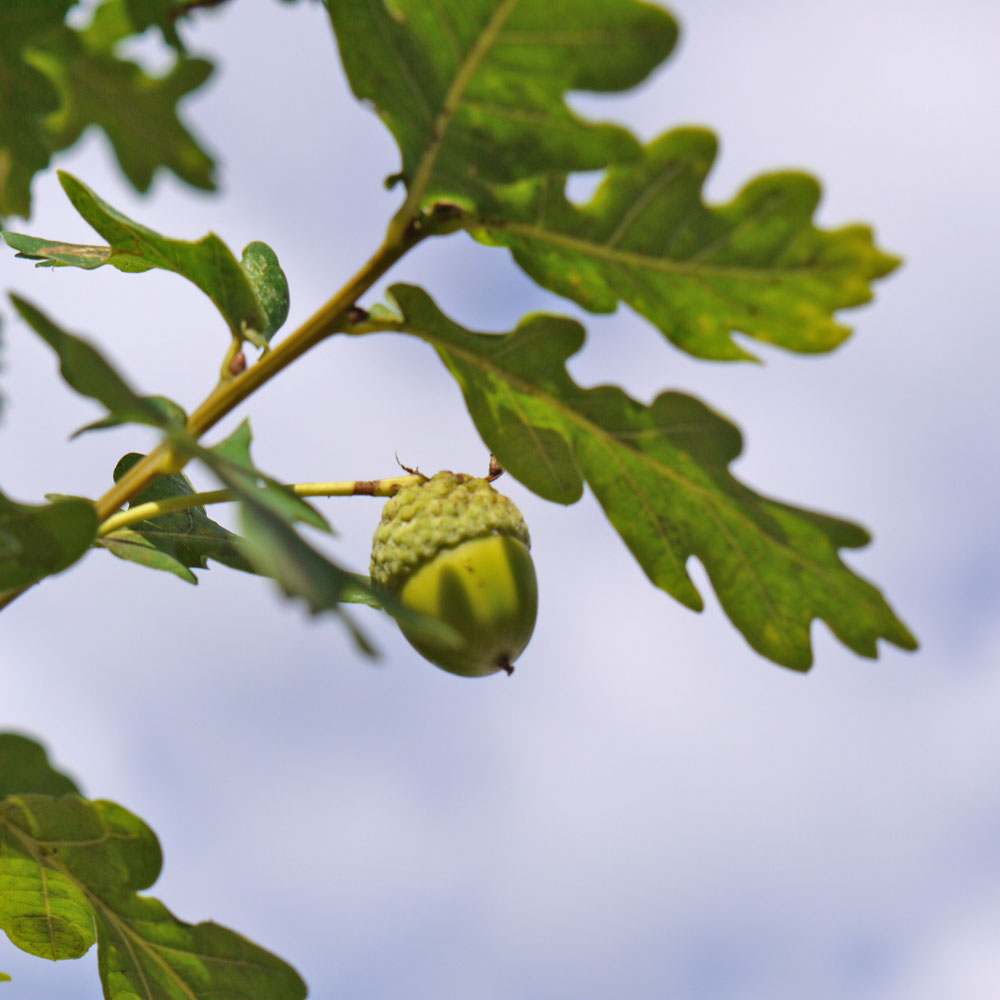
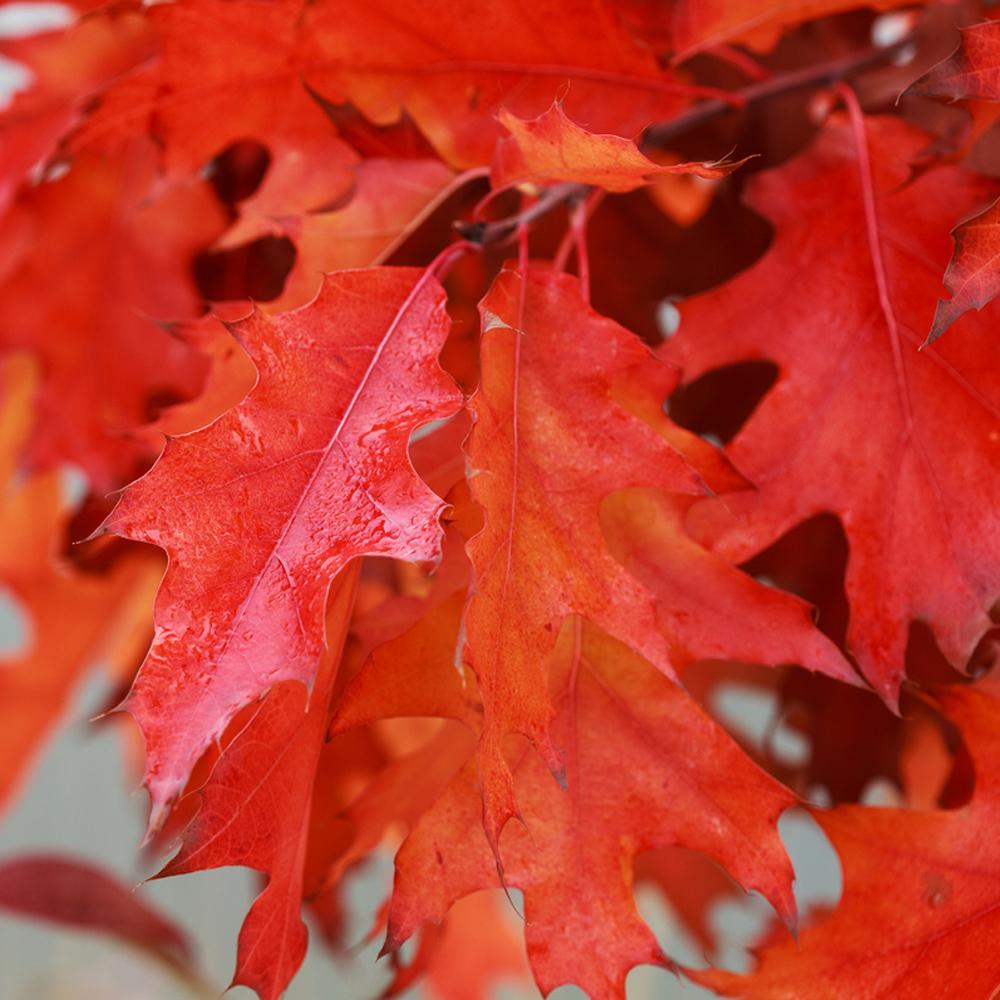

Quercus robur, commonly known as English oak, is a magnificent, deciduous tree distinguished by its distinctive dark grey, grooved bark and robust, spreading branches. This native trees has deep green, lobed leaves that transform into rich reddish-brown hues in the autumn. In spring, In spring, delicate yellow-green catkins emerge, followed by the familiar acorns in autumn.
Reaching a mature height of 25m+, the long-lived English oak makes a truly impressive addition to large gardens, parks, and woodland environments. A common sight in lowland woodlands throughout the British Isles, it is not only a source of high-quality timber but also plays a crucial role in supporting Britain’s native wildlife.
Quercus rubra (Red oak) is a magnificent, deciduous tree with a straight central trunk and a gracefully broad, oval crown. It has large, lobed leaves that emerge in shade of light to mid-green. These vibrant leaves turn to a breathtaking shades of rich crimson when autumn approaches, creating a truly captivating display. This makes the Red Oak an excellent choice for bringing both structure and dynamic seasonal colour to any landscape. Beyond its spectacular foliage, the Quercus rubra also presents subtle green flowers in the springtime, which mature into small, rounded acorns in the autumn.
As one of the faster-growing members of the Quercus family, the Red Oak was first introduced to the UK from its native North America in the 18th century. Notably, it also exhibits a higher tolerance to polluted air. This impressive tree can reach a mature height of up to 15 meters, making it an ideal addition to larger gardens, parks, and woodland environments.
Quercus ilex (Evergreen oak) is known for its slow growth and eventual broad and beautifully rounded crown. Its distinctive black, cracked bark adds to its character, while the glossy, dark green leaves with their toothed edges, reminiscent of holly, offer year-round visual appeal. In spring, charming yellow catkins also appear, followed by small, round acorns in late summer, ensuring continuous interest throughout the seasons.
Reaching a mature height of up to 20m, the Evergreen oak makes a superb specimen tree for larger gardens, parks, and woodlands. However, its versatility extends to smaller spaces as well. When started as a bush, it can be skillfully clipped to create an attractive evergreen screen or a dense and effective hedge, offering both beauty and privacy. The Evergreen oak also demonstrates excellent tolerance to challenging environmental conditions, including dry winds, salt spray, and air pollution. This resilience makes it an ideal choice for coastal gardens, windy locations, and urban settings!
Hopefully this has helped to explain what the Oak Processionary Moth is and the reasons behind the current restrictions that are helping to control the spread of this pest. Please remember that you are still able to plant smaller oak trees. However, it’s important to regularly inspect your trees and report any suspected infestations to the relevant authorities!
Further reading:
You can buy trees, hedging, shrubs and topiary online by browsing our website.
If you do not see a plant or size that is suitable for you then please call as we stock a wide variety of plants in our tree nursery. It’s worth noting that many other websites sell other people’s stock (i.e. they act as an agent) so you cannot view the products at their own site. At King & Co, all of our advertised plants are available for viewing at our tree nursery in Rayne, near Braintree, situated just over an hours drive out of London.
Our knowledgeable and experienced tree nursery staff are always contactable via phone on 01376 340469 or if you have any questions regarding any of our trees or accessories.
If you cannot see what you require on our website, please complete the enquiry form. We will give it our urgent attention and will get back to you shortly with a solution that meets your needs.

If you are looking for specific evergreen trees, Photinia, Leylandii hedging, Leylandii trees, instant hedging or shrubs, use the search bar at the top of the page